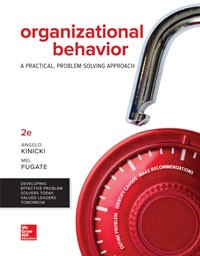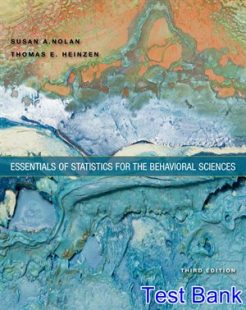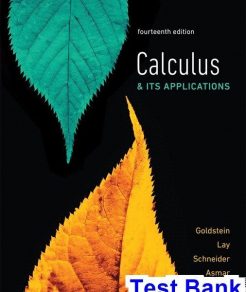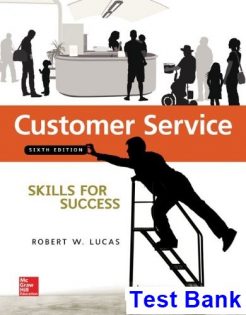Description
Test Bank for Phlebotomy: A Competency Based Approach, 5th Edition, Kathryn Booth, Lillian Mundt, ISBN10: 1259608565, ISBN13: 9781259608568
Table of Contents
CHAPTER 1 Phlebotomy and Healthcare
CHAPTER 2 Safety and Preparedness
CHAPTER 3 Infection Control
CHAPTER 4 Medical Terminology and Abbreviations
CHAPTER 5 Body Systems and Related Laboratory Tests
CHAPTER 6 The Cardiovascular System
CHAPTER 7 Patient and Specimen Requirements
CHAPTER 8 Blood Collection Equipment
CHAPTER 9 Venipuncture
CHAPTER 10 Dermal (Capillary) Puncture
CHAPTER 11 Blood Specimen Handling
CHAPTER 12 Quality Essentials
CHAPTER 13 Special Phlebotomy Procedures
CHAPTER 14 Collection of Non-Blood Specimens
CHAPTER 15 Waived Testing
CHAPTER 16 Practicing Professional Behavior
APPENDIX A Standard Precautions
APPENDIX B Transmission-Based Precautions
APPENDIX C Prefixes, Suffixes, and Word Roots in Commonly Used Medical Terms
APPENDIX D Abbreviations and Symbols Commonly Used in Medical Notations
APPENDIX E Medical Laboratory Tests
APPENDIX F Historically Relevant Phlebotomy Information
APPENDIX G ASCLS Code of Ethics and Pledge to the Profession
APPENDIX H Competency Checklists (Additional Procedures for Allen Test and Arterial Puncture Included)
APPENDIX I Commonly Used Tubes in Order of Draw
GLOSSARY
CREDITS
INDEX
Chapter 1 Phlebotomy and Healthcare
1) Phlebotomy may be used to help treat which of the following medical conditions?
A) Polycythemia
B) Diabetes mellitus
C) Hypertension
D) Anemia
2) Inpatient facilities where phlebotomists can work include all of the following EXCEPT:
A) physician office laboratories (POL).
B) hospitals.
C) nursing homes.
D) rehabilitation centers.
3) Routine inspections by which of the following agencies ensure that hospital and reference laboratories are following standards of performance for laboratory testing and phlebotomy procedures?
A) CAP
B) CLSI
C) NAACLS
D) NCCLS
4) Which agency is responsible for hospital accreditation?
A) CLIA
B) TJC
C) NAACLS
D) OSHA
5) Work-related injuries are reported to which regulatory organization?
A) CDC
B) DOT
C) EPA
D) OSHA
6) Blood and blood products that are used in the treatment of patients must be labeled according to the standards set forth by which agency?
A) AABB
B) CDC
C) EPA
D) FDA
7) Neonatologists diagnose and treat disorders associated with which type of patients?
A) Elderly patients
B) Newborn infants
C) Pregnant women
D) Men with reproductive health issues
8) The assessment and treatment of hormone disorders is the function of which medical specialty?
A) Geriatrics
B) Endocrinology
C) Nephrology
D) Gynecology
9) Making sure that you adhere to the required dress code and presenting a well-groomed appearance and manner are part of:
A) customer feedback.
B) professionalism.
C) scope of practice.
D) occupational safety.
10) The measurement of proteins, lipids, hormones, and other substances in serum is the function of:
A) clinical chemistry.
B) histology.
C) immunology.
D) microbiology.
11) In the medical laboratory organizational chart, phlebotomists are placed under the oversight of the:
A) hematology supervisor.
B) chemistry supervisor.
C) microbiology supervisor.
D) specimen procurement supervisor.
12) The investigation of human cells for the presence of cancer cells is performed in which laboratory department?
A) Serology
B) Hematology
C) Histology
D) Cytology
13) Determining whether or not a pathogen is resistant to an antibiotic is the responsibility of which medical laboratory department?
A) Blood bank
B) Clinical chemistry
C) Immunology
D) Microbiology
14) While working in the specimen processing area, you are asked to deliver specimens for trace element testing. Where will you deliver these specimens?
A) Clinical chemistry
B) Hematology
C) Immunology
D) Molecular diagnostics
15) You are to draw a sodium citrate evacuated tube for a PT/PTT coagulation test. To which department will you deliver this tube for proper analysis?
A) Blood bank
B) Hematology
C) Immunology
D) Molecular diagnostics
16) A 32-year-old woman dropped off a specimen for a urine HCG. Which department will most likely process and examine this sample?
A) Blood bank
B) Hematology
C) Molecular diagnostics
D) Urinalysis
17) What is another name for the blood bank department?
A) Clinical chemistry
B) Hematology
C) Immunohematology
D) Immunology
18) You are a new employee who needs to deliver a surgical specimen that will be processed, stained, and evaluated by a pathologist for final diagnosis. Which laboratory department will process this sample?
A) Cytology
B) Histology
C) Pathology
D) Transcription
19) Which medical laboratory department performs tests to determine the body’s resistance to disease?
A) Cytology
B) Histology
C) Serology
D) Pathology
20) A patient calls and asks to speak with someone who can provide her with her blood culture results. To which laboratory section will you direct this call?
A) Hematology
B) Immunology
C) Microbiology
D) Molecular pathology
21) A physician calls the laboratory for a patient’s CBC results. Where should you direct the call?
A) Hematology
B) Immunology
C) Immunohematology
D) Molecular diagnostics
22) In a laboratory, which department handles testing such as cholesterol, lipid panels, and blood glucose?
A) Clinical chemistry
B) Hematology
C) Histology
D) Immunology
23) The four basic elements in the communication loop are:
A) speaker, listener, sender, and message.
B) sender, message, receiver, and feedback.
C) message, feedback, listener, and white noise.
D) receiver, message, listener, and feedback.
24) As the phlebotomist assigned to STAT blood collections, you are asked to collect a specimen from a patient who is in the oncology unit. This patient is
A) about to receive pain management before going to surgery.
B) being assessed for heart disease.
C) about to undergo a procedure for diagnostic imaging.
D) being treated for cancer.
25) What are CLIA “waived” tests?
A) Moderately complex tests such as type and crossmatch
B) A series of dilutions in regards to reagents and chemicals
C) Simple tests that have minimal risk of incorrect results
D) Simple tests that have high risk of incorrect results
26) As the phlebotomist assigned to STAT blood collections, you are asked to collect a specimen from a patient who is awaiting a procedure in radiology. This patient is
A) about to receive pain management before going to surgery.
B) being assessed for heart disease.
C) about to undergo a procedure for diagnostic imaging.
D) being treated for cancer with chemotherapy.
27) The agency responsible for categorizing the level of complexity of laboratory tests is:
A) OSHA.
B) POL.
C) EPA.
D) CDC.
28) After you have completed a blood collection on an outpatient, the patient states that he has an appointment with the department that will perform breathing treatments. To which department will you direct or take the patient?
A) Electroencephalography
B) Occupational therapy
C) Physical therapy
D) Respiratory therapy
29) After you have completed a blood collection on an outpatient, the patient states that she has an appointment with the department that will perform brain wave testing. To which department will you direct or take the patient?
A) Electroencephalography
B) Physical therapy
C) Radiology
D) Respiratory therapy
30) Proper communication is important when addressing patients. All of the following are examples of positive communication EXCEPT:
A) eye contact.
B) neat, well-groomed appearance.
C) looking down and away from the patient.
D) respecting personal space.
31) Which agency establishes standards to which approved phlebotomy programs must adhere?
A) NAACLS
B) CDC
C) FDA
D) FCC
32) What federal agency establishes regulations to implement CLIA ’88?
A) TJC
B) POL
C) CDC
D) CMS
33) The term phlebotomy means:
A) draw blood.
B) cut into a vein.
C) drain blood.
D) dermal cut.
34) You enter a patient’s room to collect a blood specimen and find another health care worker talking with the patient about proper diet for her medical condition. This health care worker is most likely a:
A) registered dietitian.
B) occupational therapist.
C) physical therapist.
D) respiratory therapist.
35) You enter a patient’s room to collect a blood specimen and find another health care worker who is discussing pain management before surgery. This health care worker is most likely a(n):
A) registered dietitian.
B) occupational therapist.
C) physical therapist.
D) anesthesiologist.
36) Which of the following scenarios would be likely to negatively affect customer satisfaction? (Choose all that apply)
A) A medical office receptionist tells a patient to “have a seat,” without making eye contact.
B) A phlebotomist fumbles with equipment assembly and does not appear ready to perform the blood collection.
C) A healthcare worker encounters a lost visitor and assists this person to his/her destination.
D) Every health care worker a visitor encounters greets him cheerfully and asks if he needs assistance.
37) A laboratory professional who has the same level of training as a medical laboratory technician is a:
A) cytologist.
B) histologic technician.
C) medical laboratory assistant.
D) phlebotomist.
38) Laboratory professionals who have the same level of training as a medical laboratory scientist include (Choose all that apply):
A) cytologist.
B) histologist.
C) pathologist.
D) phlebotomist.
39) Providing medical care for an elderly person would best be performed by a physician who is a:
A) family practice physician.
B) gerontologist.
C) neonatologist.
D) pediatrician.
40) The laboratory department that evaluates blood and body fluids for the presence of pathogenic bacteria, fungi, parasites, and viruses is referred to as
A) cytology.
B) immunohematology.
C) histology.
D) medical microbiology.
41) The phlebotomist is mainly involved in which phase of laboratory testing?
A) Pre-examination
B) Examination
C) Post-examination
D) Point-of-care testing
42) A fourteen-year-old boy requires surgery to fix a broken femur. The surgeon who will perform this surgery is a(n)
A) general surgeon.
B) orthopedic surgeon.
C) pathologist.
D) pediatric physician.
43) Physicians who diagnose and treat disorders of the urinary tract may be (Choose all that apply)
A) anesthesiologists.
B) nephrologists.
C) orthopedists.
D) urologists.
44) Which element below is NOT a part of the communication loop?
A) Sender
B) Receiver
C) Observer
D) Message
45) The receiver’s response to the sender during communication is called
A) a barrier.
B) feedback.
C) interference.
D) the message.
46) Telling a patient that the venipuncture will not hurt is an example of
A) a barrier.
B) feedback.
C) false reassurance.
D) street talk.
47) A phlebotomist should always have good personal hygiene and dress properly. Which agency requires all lab personnel to wear lab coats?
A) OSHA
B) HHS
C) OIG
D) CAP
48) When collecting specimens from patients who are unconscious, it is best to
A) speak loudly and use hand gestures.
B) remain silent; the patient cannot hear anyway.
C) communicate in the same manner as usual.
D) talk about the patient with visitors.
49) You have five minutes before you are expecting your next patient for a blood draw. To pass the time, you pull out your cell phone and start playing a quick game. The patient arrives sooner than expected and you are still finishing the game. How would you handle this situation?
A) Tell the patient it will just take you one more minute to finish the game.
B) Turn the device off immediately and apologize to the patient.
C) Joke about how smartphones are great for passing the time.
D) Slip your phone into your back pocket and hope the patient didn’t see you.
50) You are eating your lunch in the breakroom while checking Facebook on your phone. Another phlebotomist you work with had an embarrassing incident with a patient earlier in the day that you found very funny. You post a comment about the incident on a colleague’s wall. Which of the following statements about this scenario are true? (Choose all that apply)
A) Disclosing any patient situation or information publicly is a violation of HIPAA.
B) You should have used private messaging instead of posting on your friend’s wall.
C) It could damage your working relationship with the phlebotomist who had the incident.
D) Publically joking about a colleague to another colleague is unprofessional.
51) Another name for a dermal puncture is:
A) venipuncture.
B) digit puncture.
C) surface stick.
D) capillary puncture.
52) What is the function of a patient advocate?
A) To represent patients in legal claims against healthcare providers
B) To help guide patients through the healthcare system
C) To explain to patients why a specific surgery or procedure is necessary
D) To purchase medications for patients who cannot afford them
53) When did the phlebotomy profession become established as a result of technology and an expansion of laboratory functions?
A) 1890s
B) 1930s and 1940s
C) 1960s
D) 1980s and 1990s
54) Bloodletting procedures included:
A) cupping
B) leeches
C) venesection
D) all of these
55) Venesection procedures made use of
A) cupping
B) lancets
C) leeches
D) all of these
56) Which statements are true about leeches?
A) Leeches are a type of worm.
B) Leeches have a sucker at both ends.
C) Leeches are kept in fresh water.
D) All of these
57) Outpatient facilities where phlebotomists can work include all of the following except:
A) ambulatory care centers
B) blood collection centers
C) nursing homes
D) physician offices







Reviews
There are no reviews yet.